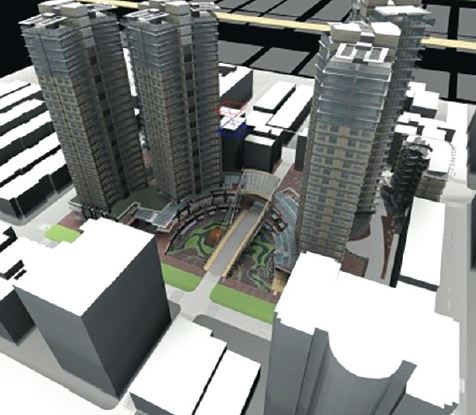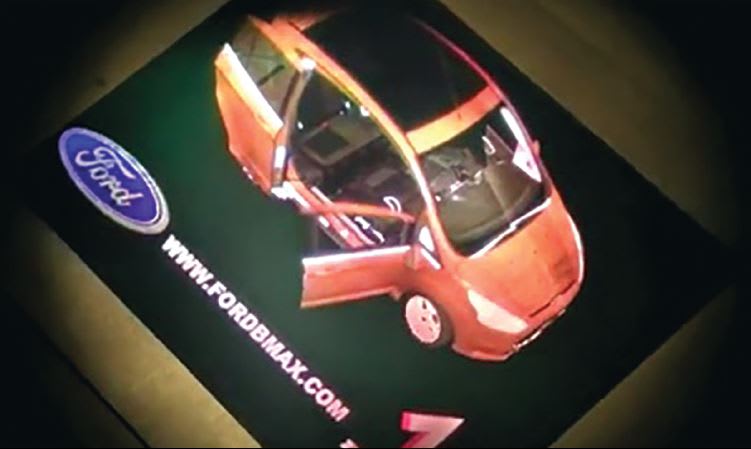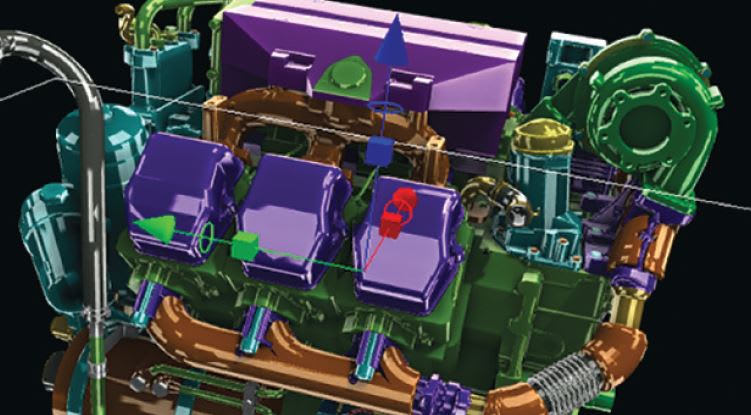Industries as diverse as architecture, engineering, construction, advertising, and medical have all incorporated an array of 3D visualization technologies into their design, development, and production processes. A rapidly expanding library of 3D modeling tools, 3D content, and 3D printing materials have made design more cost-effective and expedited the product-to-market process. But how exactly do 3D visualization technologies work? Taking a closer look at the science behind the innovation reveals a striking convergence in which state-of-the-art research processes meet a growing understanding of visual communication.
Behind the Scenes of 3D Visualization

Industry leaders have increasingly adopted 3D visualization tools as they continue to discover new uses and more efficiency in production. The process is not as complicated as it may seem. Most 3D visualization tools rely on a combination of software and state-of-the-art visual capture tools. Many of these modeling efforts incorporate and improve on digital design staples, such as computer aided design (CAD), infrared imaging, animation software, and photo capture in order to lay out their concept.
The capture phase may involve regular photography, laser scanning, aerial imagery, or motion capture technology, among others. Using image processing software, captured data can be reconstructed into a 3D model. Once the rough model is completed, lighting and material aspects are included to depict the image as it exists or would look in its environment. Capture data is rendered on the modeling software to create 3D images and bring the visions to life. These models act as true representations that will guide the users to achieving their mission and speed up the processing stage. The 3D model will have all of the exact details, depth, and accuracy of the intended target (See Figure 1).
Innovating the Design Process
The automotive industry, for one, has begun adopting 3D visualization technology to bring vehicle construction to the next level. One notable instance is the first true application of 3D tools to the vehicle construction process. At Ford Motor Company, engineers use sophisticated 3D mapping technology to observe problems in the surface paint coating and manufacture the rear axle parts for their F-Series pickup trucks. To find problems in surface paint coating like air bubbles or flaking, operators use 3D cameras to take more than 3,000 images of a vehicle part in 15 seconds. The photos are then matched to an ideal computer model, creating an interactive 3D image which allows engineers to identify any minute issues in a part’s paint job, such as dust or dirt particles, according to a September 2013 article in the Times of Northwest Indiana. Imperceptible to the human eye, these issues can be targeted and buffed out of the finished part. The level of detection ensures that any issues are dealt with before the product is delivered to the consumer market.

“The human eye used to measure the end result, but there are ergonomic difficulties, eye strain, and workers staying on their feet all day,” Ford project manager Tom Dougan told the news source. “The operators used to spend 70 percent of their time scanning and 30 percent repairing defects. Now they spend 10 percent of their time scanning and 90 percent of their time finessing the vehicle.”
Ford has been one of the leading companies in the use of 3D technology for a variety of different applications. In addition, on the engineering and manufacturing side, Ford has used 3D printing and laser inspections. The company is also no stranger to the use of 3D holographic technology in product design and promotion, as they partnered with Zebra Imaging to create an innovative platform for the launch of the Ford BMax vehicle. Ford Motor Company utilized Zebra Imaging’s 3D holographic prints to promote the new Ford B-Max car via a social media campaign (See Figure 2).
The Advantage of Holograms
A holographic image of a design provides a three-dimensional view for much less money and in much less time than physical models. Instead of the weeks it takes to build a physical model, a hologram can be produced in a matter of hours at a fraction of the cost. Eliminating the need for a model gives an architect more control in a presentation’s appearance, and helps facilitate the design iteration phase.
Holograms are robust, easy to handle, and easy to transport and send. Updates and multiple copies can be produced and sent out to stakeholders at a single location or multiple locations, and they can be produced in a matter of hours and shipped anywhere in the world.
Zebra’s cloud-based workflow, for example, allows users to upload their 3D data file for holographic printing. Zebra uses a wide range of 3D data sources, including CAD/CAE/CAM files, BIM models, laser scans, and files from popular 3D data programs/formats like Maya, Sketch-up, 3D Studio Max, Revit, and AutoCAD. The data is then processed and prepared for holographic printing.
As the technology continues to develop, the automotive sector is just one of the many industries that can realize myriad improvements through the adoption of 3D technologies. 3D imaging has emerged as a powerful tool that has permanently expanded the possibilities for production.
Insights Gained from 3D Visualization

Recent investment in modeling technology has driven positive forecasts for the use of 3D imaging. 3D visualization has become a valuable asset for users due the additional capabilities it offers over other processes. With a truer representation of finished products, modeling users can better understand what their vision will look like upon completion. The technologies also facilitate easier alterations, digital correction of prototype, and better communication between project participants. A structural or cosmetic flaw can be repaired in real-time and at little cost. This type of proactive ability allows organizations to take a larger role in the creation process and promotes successful renderings of the ideas.
This article was written by Jennifer Stowe, Director of Sales and Marketing, Zebra Imaging. For more information, Click Here .
References:
Pete, Joseph. “New Technology Replacing the Naked Eye at Ford Plant” The Times of Northwest Indiana, September 13, 2013: http://www.nwitimes.com/

